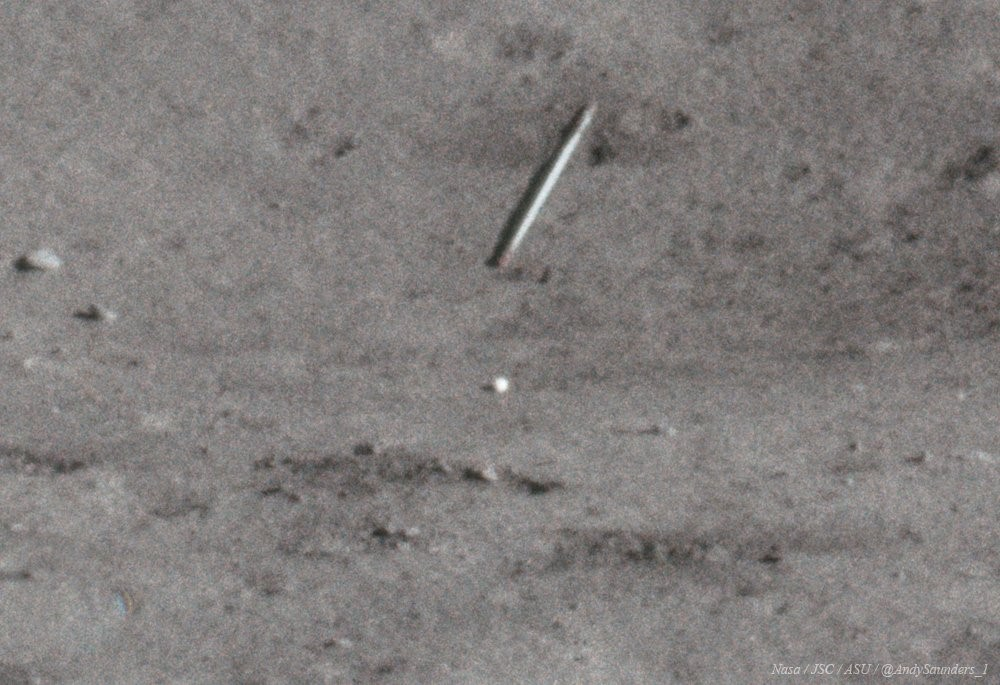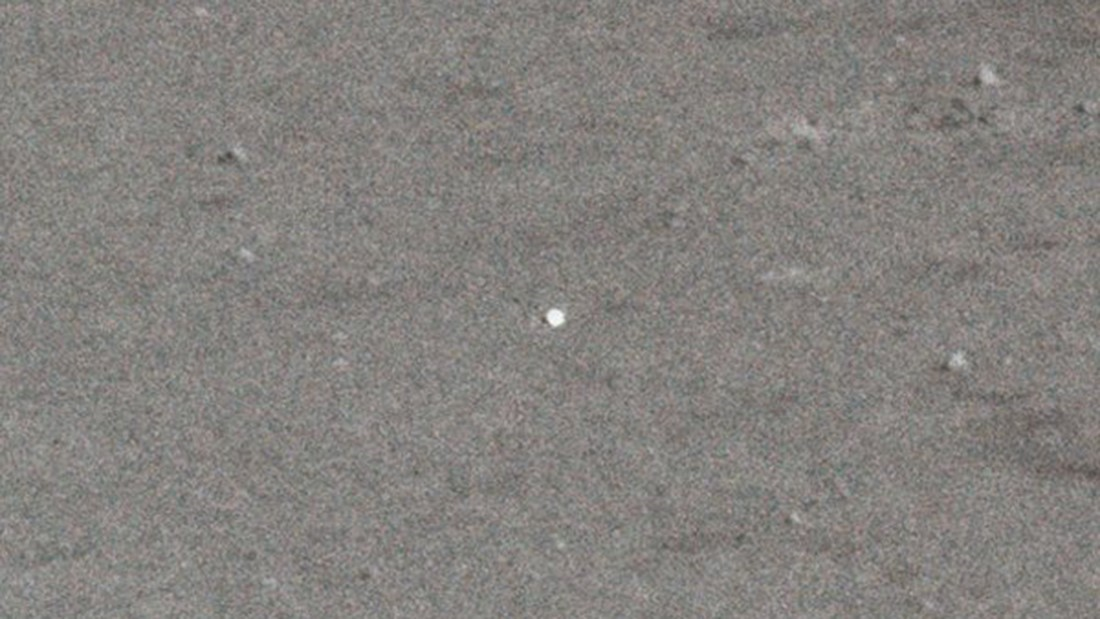On February 5, 1971, Apollo 14 touched down on the Moon. As well as equipment for attempting to determine the internal structure of our satellite, and to measure the composition of the lunar atmosphere, the astronauts took with them a six-iron golf club head and some golf balls.
The head had been attached to the handle of a sample-collection tool, which you’ll notice is not a type of club favored by the pros. The following day, astronaut Alan Shepard got to do what nobody had done before, and practice his swing on the Moon.
His first shots did not go well, skimming the top of the ball and sending it just a few feet. On the third swing, clearly motivated by this counting against his score, he connected and the ball flew out of shot on a fairly low trajectory. Shepard managed to hit the second ball on the first try, believing it had gone “miles and miles and miles”.
One of the balls was found by fellow astronaut Edgar Mitchell in a nearby crater, but the second wasn’t found until half a century later when imaging specialist Andy Saunders digitally enhanced scans of the original film taken during Apollo 14. Rather than the “miles and miles and miles” Shepard had thought he’d hit, Saunders’ analysis revealed that, despite the low gravity on the Moon, the ball had not gone far at all.
“We can now determine the approximate distances of both shots,” Saunders wrote for the US Golfer’s Association (USGA). “Ball number one (24 yards) [22 meters] and ball number two (40 yards) [36 meters].”

Ball number 1.
However, as Saunders countered, “The fact that Shepard even made contact and got the ball airborne is extremely impressive.” The suit would have restricted movement and the helmet would have made it very hard to see, not to mention the one-sixth gravity and lack of atmosphere.
“I would challenge any club golfer to go to their local course and try to hit a six-iron, one-handed, with a one-quarter swing out of an unraked bunker,” he told BBC Sport. “Then imagine being fully suited, helmeted and wearing thick gloves. Remember also that there was little gravity to pull the clubhead down toward the ball.”

Ball number 2.
Kudos to Shepard for being the first person to golf on the Moon, but it was, in all honesty, a terrible shot, even if he was wearing a cumbersome spacesuit.
“As a professional, I hear a multitude of excuses for poor golf performance, ‘the clubs are too old’, ‘I never get to play’, ‘I’m injured’,” pro golfer Gary Felton told IFLScience. “The truth is that some golfers are bad golfers and they lie. They lie about why they play badly, they lie also about their performance. Mr Shepard was, unfortunately, a golfer who despite arguably ill-advised golfing attire, was a bit of a fibber. You disastrously embellished your performance on the Moon.”
Saunders calculated that if a professional golfer were to hit a golf ball on the Moon at 298 kilometers per hour (185 miles per hour) – 2016 PGA champion Jimmy Walker’s Earthbound speed – at a clean 45-degree angle, they could outshine Shepard by landing the ball an impressive 4.22 kilometers (2.62 miles) away, having stayed in the air for a full minute.
“My recommendation for golfers who choose to play the noble game in space suits on the Moon would be a wider stance and a shorter backswing,” Felton commented. “And make sure no one is watching.”
An earlier version of this article was published in February 2021.
Source Link: Half A Century After He Hit It, Alan Shepard’s Golf Ball Was Found On The Moon